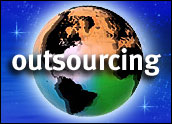
The front office meets the back office at the Web 2.0 enterprise portal.
Part 1 of this series discusses the changing role of portals in a Web 2.0 world; Part 2 relates portals to the shifting landscape of e-commerce.
The enterprise 2.0 portal is a single accessible location intended to consolidate resources and serve up data from systems throughout an organization so that each “touch” a company has with its customers, prospects, partners and employees can be created, recorded and evaluated to improve relationships, enhance collaboration and cooperation and drive business value.
The root idea behind Web 2.0 in the enterprise (aka “enterprise 2.0”) is to help make an organization collaborative, participatory, efficient, user-driven, action-oriented and successful.
The enterprise 2.0 portal addresses these expectations through the promise of personalization and social networking, rich Web-based applications, wikis, blogs, “pull” syndicate feed readers, media sharing, programmable Web mashups, mobile and more.
The social networking Web sites MySpace and Facebook are pointing in the direction that the enterprise 2.0 portal must go — Web-as-participation-platform and the deep, “share”-oriented two-way interactive relationships characterized by collaboration and cooperation.
Can the corporate world profitably apply the MySpace magic to business communities?
The Beginnings of MyBizSpace?
“Consumer and enterprise portals share many characteristics,” said Mark Carges, executive vice president of enterprise information portal software vendor BEA Systems. “Companies of all shapes and sizes use portal technology to consolidate existing systems and Web applications into more sophisticated, simpler user experiences for different audiences.”
Enterprise portals are typically based on software that helps companies quickly deploy and better manage multiple portal applications and experiences, Carges told CRM Buyer. Enterprise portals, he said, feature a number of technologies to help integrate existing enterprise IT systems like enterprise applications and content repositories.
“This is the most significant difference between a consumer portal and an enterprise portal,” he explained. “iGoogle, as an example, cannot be configured to support authentication to a corporate user directory, or integrate data from a company’s back-office systems. And even if it could, there are significant privacy and security concerns involved.”
However, users want their favorite Web sites and consumer applications accessible via the enterprise portal, contended Shiv Singh, head of the enterprise solutions practice at Avenue A | Razorfish, in a Sept. 2007 report, “Trends for a Portal 2.0 World.”
“For example, they do not want to have to move back and forth between a ‘my page’ on an employee intranet and a ‘my page’ on a Google, Yahoo or MSN Web site,” Singh wrote. “Forced to choose, many prefer the consumer-oriented Web sites to their company ones.”
Andrew McAfee, an associate professor in the Harvard Business School, identifies enterprise 2.0 as “the emerging use of Web 2.0 technologies like blogs and wikis within intranets.”
McAfee has introduced the mnemonic “SLATES” as the basic framework of enterprise 2.0 to help guide anyone creating or acquiring enterprise 2.0 software.
The SLATES acronym describes the following:
- The combined use of effective enterprise search and discovery
- Using links to connect information together into a meaningful information ecosystem using the model of the Web
- Providing low-barrier social tools for public authoriship of enterprise content
- Tags to let users create emergent organizational structure
- Extensions to spontaneously provide intelligent content suggestions similar to Amazon’s recommendation system
- Signals to let users know when enterprise information they care about has been published or updated, such as when a corporate RSS (really simple syndication) feed of interest changes.
Portals and mashups are both content aggregation technologies. Like consumer mashups, business mashups pull various types of information into a single Web site to provide composite views of data. Applibase’s DataMashups is one of the more complete Web-based mashup builders. Examples of enterprise mashups include Salesforce Dashboard for Salesforce.com, which uses the company’s Web services application programming interface to gather data; the AppliBuilder charts to display the data. Wiki Application is an online wiki that can be used for team collaboration and joint editing of documents.
The mobile Web 2.0 addresses the needs of remote, mobile workforces who access the enterprise portal from mobile devices — cell phones, PDAs, Web-enabled smartphones, laptops and other portables — connected to a public network. An example Web 2.0 technology used on the mobile Web 2.0 is the mblog. Other apps are camera phone snaps, texting, e-mail and mobile video.
For now though, enterprise portals are mostly used as dashboards that gather information from different systems within an organization, said Omar AL Zabir, CTO of the social networking site Pageflakes and author of Building a Web 2.0 Portal with ASP.NET 3.5.
“But we have also seen lawyers set up law portals where they publish articles and documents related to their work areas,” Al Zabir told CRM Buyer. “And every week we see new training portals appear that specialize in a variety of topics starting from simple programming tutorials to complex management training.”
Portal Synthesis: CSM+CRM+ERP+EIP
At the core of the enterprise 2.0 portal is an amalgamation of traditional corporate systems –content management, CRM, enterprise resource planning (ERP) and enterprise information portals (EIPs) — integrated with Web 2.0 elements such as Web-based communities and hosted services, including social networking, wikis, blogs, folksonomies and RSS feeds.
The content management system (CMS), which manages Web site documents, provides for storage, maintenance and retrieval of HTML (hypertext markup language) and XML (extensible markup language) documents and all related elements. The CRM system is used to plan, schedule and control pre- and post-sales activities in the organization. The ERP system (inventory control, order tracking, finance and accounting, HR) provides a unified database to store enterprise-wide data. The EIP gathers information from various databases, servers and the Internet for delivery via a single interface that connects users to all the documents, Web sites, information, e-mails, etc. required for them to perform their job functions well.
The Web 2.0 technology then facilitates collaboration and sharing among users. Working together, these integrated systems emerge as the enterprise 2.0 portal, aimed at servicing the “extended enterprise” of customers, prospects, employees, suppliers, partners and investors.
For customers and distribution partners, the “sell-side” of the enterprise 2.0 portal uses Web 2.0 concepts to encourage building communities around company products, providing feedback on products and, in some cases, even informing strategy.
For an organization’s network of suppliers and service providers, the “buy-side” of the enterprise 2.0 portal presents opportunities for collaboration.
For employees (B2E), the enterprise 2.0 portal makes it easier to collaborate efficiently by leveraging each individual’s intellect and the resources within the enterprise to create stronger and more successful products.
Investors can use the enterprise 2.0 portal to get access to financial information like cash reserves and return on investment, and they can quickly generate financial reports.
Enterprise Information Portals
The EIP market continues to grow over 9 percent annually, with an estimated US$1.4 billion in annual sales by 2011, according to BEA Systems. EIP vendors like IBM, Microsoft, Oracle and SAP have looked beyond the eroding markets for their legacy CRM and ERP applications to bet big on portals because they are seeing leading-edge companies embracing Web 2.0 principles for use in the enterprise.
According to IBM, portals are next-generation desktops, delivering e-business applications over the Web to all kinds of client devices to form a unified, collaborative workplace.
The principal EIP software vendors fall into one of seven major categories:ol.story-list {padding-left: 25px;}ol.story-list li {list-style-position: outside;}
- Portals: Epicentric/Vignette, Plumtree/BEA/Oracle and Viador
- Infrastructure: IBM, BEA/Oracle, Sybase and Microsoft
- Search/categorization solutions: Autonomy/Verity, Arisem/Thales
- Content management: Documentum/EMC, Interwoven/iManage, InStranet and OpenText
- CRM/ERP software: BroadVision, Vignette, SAP and PeopleSoft/Oracle
- EAI (enterprise application integration) solutions: Tibco and webMethods/Software AG
- Business intelligence software: Cognos/IBM, Business Objects/SAP and Brio/Hyperion/Oracle.
Top Five Portals Products Total Software Revenue, Worldwide, 2004-2006 (Millions of Dollars)
Vendor200420052006Share 2004Share 2005Share 2006IBM239.3268.1315.630.7 percent30.7 percent31.1 percentMicrosoft98.6132.4193.712.7 percent15.2 percent19.1 percentBEA Systems147.2145.517718.9 percent16.7 percent17.4 percentOracle89.6120.6127.511.5 percent13.8 percent12.5 percentVignette25.529.729.23.3 percent3.4 percent2.9 percentOthers278.7175.6173.122.9 percent20.2 percent17 percentTotal Market778.9871.91,016.1100 percent100 percent100 percentSource: Gartner (June 2007)
Security Issues
Business Web 2.0 demands a trust fabric different from that required for social Web 2.0. Some information needs to stay within the corporate hierarchy. The total information exposure suggested by Web 2.0 is of serious concern to corporate managers.
David Gootzit, a Gartner research director focused on the enterprise portal market, sees security as a primary Web 2.0 portal issue. “Companies need some mechanism for controlling security as well as auditability within the system,” he told CRM Buyer. “Managers need to grant parties ad hoc access only where appropriate. It’s an issue of providing flexibility without screwing up the back-end systems.”
Web 2.0 and consumerization are two of the most prominent themes in Gartner research, he said. “As they feed and amplify one another, we believe that many provocative predictions will occur,” he said. As early as 2005, Gootzit predicted that the “myPortal” will mature from a consumer phenomenon into an enterprise necessity, portals will play an important role in the introduction of Web 2.0 technologies to the enterprise, portal vendors will decompose their portal products along service-oriented lines, and portals will serve as the primary entry point for enterprise mashups. So far, his insights look dead-on.

















































Social CRM
See all Social CRM